Middle East
Israel wildfires flare near Jerusalem for a second day | Wildlife News
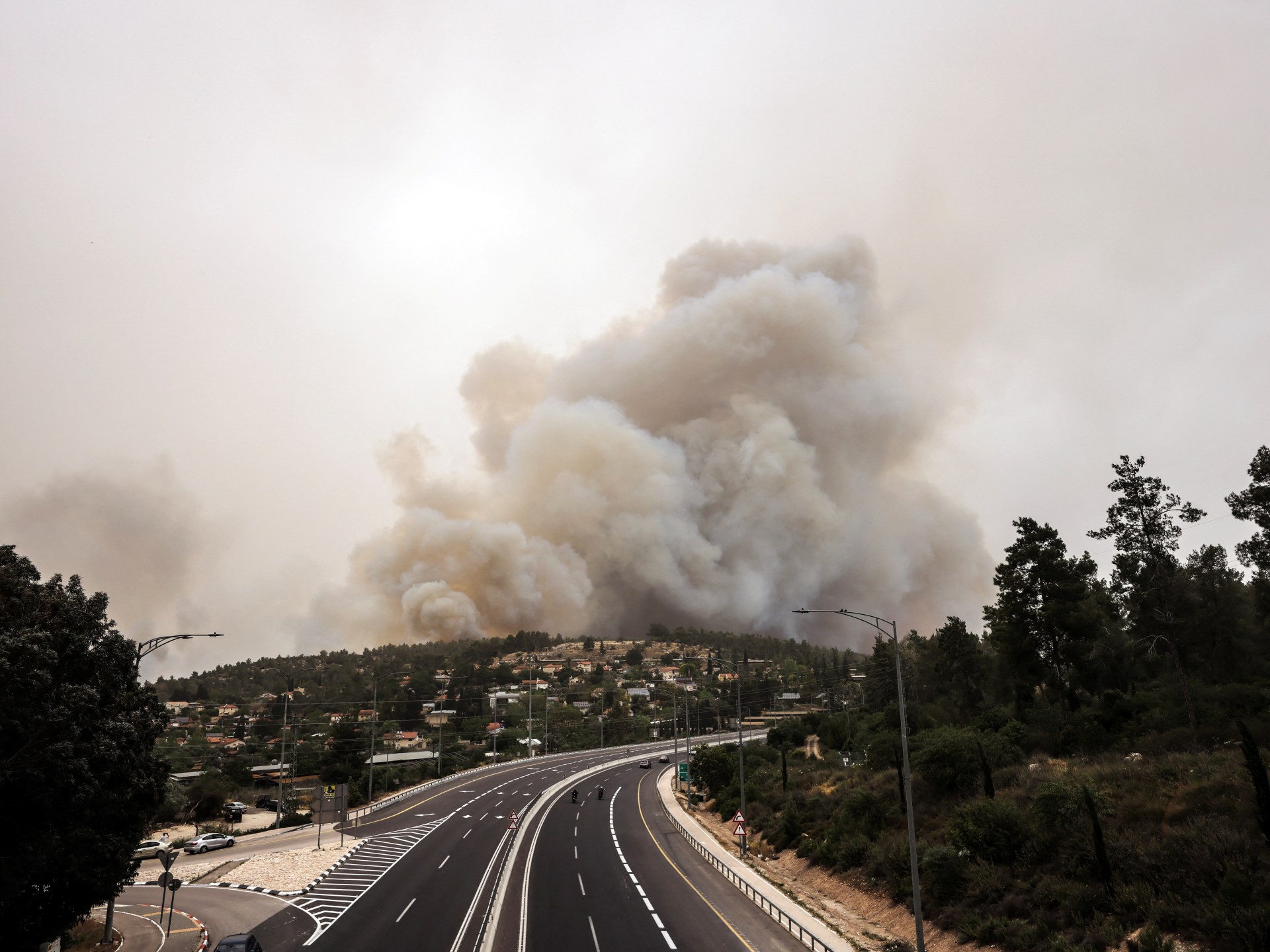
Israel’s firefighting service said 163 ground crews and 12 aircraft were working to contain the flames.
Israeli firefighting teams have been tackling wildfires near Jerusalem for a second day, with police reporting the reopening of several major roads that had been closed.
The fires broke out on Wednesday along the main Jerusalem–Tel Aviv highway, prompting police to shut the roads and evacuate thousands of residents from nearby areas.
Israel’s firefighting service said 163 ground crews and 12 aircraft were working to contain the flames.
Rescue agency Magen David Adom said it treated 23 people on Wednesday, mostly for smoke inhalation and burns.
Seventeen firefighters have also been injured, according to Israel’s public broadcaster Kan.
Crews worked through the night, allowing the reopening of main roads, including the Jerusalem–Tel Aviv route, police said.
“All routes have been reopened to traffic,” according to a police statement.
National emergency
Fanned by high temperatures and strong winds, the fires spread rapidly through wooded areas, prompting evacuations from at least five communities, police said.
European countries Italy and Cyprus have dispatched eight firefighting planes to Israel to support its emergency efforts, according to The Times of Israel.
The assistance comes as fires continue to burn in 11 hotspots near Jerusalem, with seven towns still under evacuation, the publication said, quoting Israel’s Fire and Rescue Service.
Israel’s Prime Minister Benjamin Netanyahu has declared a “national emergency”, warning the fires could spread into Jerusalem.
The Israeli military said its personnel were helping in Jerusalem and other central districts.
“Overnight dozens of engineering vehicles started operating throughout the country to form lines to prevent the fire from spreading into other trees,” a military statement said on Thursday.
“The IAF (air force) continues assisting in the effort to extinguish the fires,” it said.
Middle East
Sudan ‘horror knows no bounds’, says UN, as deaths in Darfur rise | Sudan war News
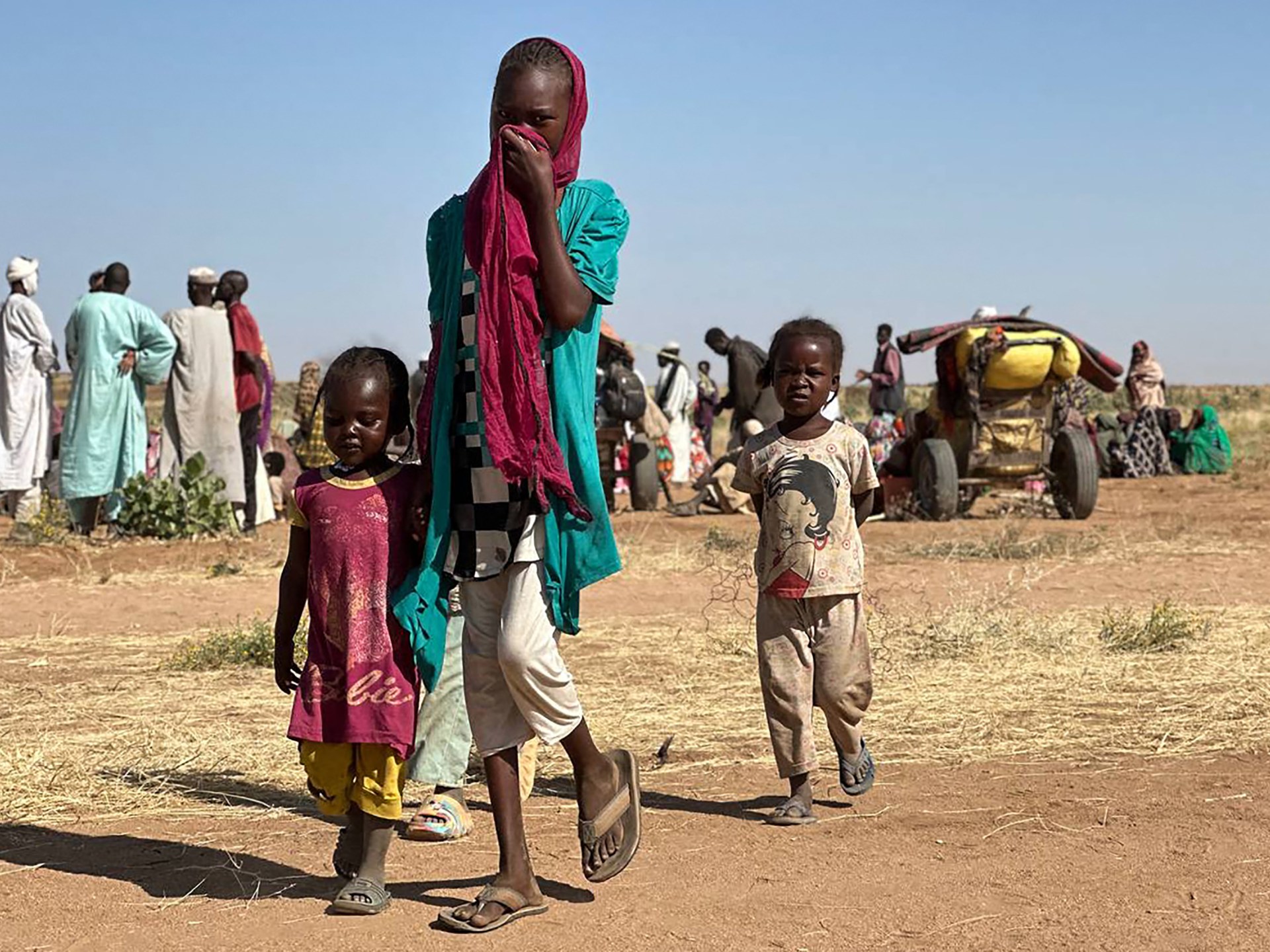
UN rights chief says civilians ‘trapped in dire conditions’ in and around el-Fasher as RSF warns of further ‘bloodshed’.
More than 540 people have been killed in Sudan’s North Darfur in just three weeks as paramilitaries intensify their attritional battle for the regional capital of el-Fasher, according to the United Nations.
“The horror unfolding in Sudan knows no bounds,” said Volker Turk, the UN high commissioner for human rights, in a statement on the devastating impact of the two-year civil war published on Thursday, signalling that the death toll of 542 over the past three weeks was likely “much higher”.
Darfur in particular has been a key battleground in the brutal war that erupted in April 2023 between the Sudanese Armed Forces (SAF) and the paramilitary Rapid Support Forces (RSF), which has left tens of thousands dead, uprooted more than 12 million and created what the UN describes as the world’s worst humanitarian crisis.
The RSF, which lost Khartoum last month, has in recent weeks mounted multiple attacks on el-Fasher and the nearby refugee camps of Zamzam and Abu Shouk, triggering an exodus of hundreds of thousands of people 60km (37 miles) across the desert to the town of Tawila.
Sudan’s presidential palace in central Khartoum was shelled Thursday by the RSF, a military source told the AFP news agency, the second such attack on the capital in a week.
Turk pointed to a new attack three days ago by the RSF on el-Fasher and Abu Shouk that killed at least 40 civilians.
He said he feared further violence after the RSF issued a warning of further “bloodshed” ahead of “imminent battles”, adding that civilians “trapped amid dire conditions” in and around el-Fasher needed to be protected.
Turk’s statement came as the RSF was on the cusp of seizing control of the strategic city of al-Nahud in West Kordofan, a gateway to the Darfur region, held by Sudan’s army since the start of the conflict.
Reporting from Khartoum, Al Jazeera’s Hiba Morgan said that both sides viewed the city as crucial for gaining the upper hand in the conflict.
“It’s clear that the RSF does not want the army to try to launch attacks on its positions in Darfur, especially since the army has been saying that it wants to retake cities in Darfur … and they want to break the RSF’s siege of el-Fasher,” she said.
‘Extremely disturbing’
Turk also highlighted “reports of extrajudicial executions in Khartoum state”, which he described as “extremely disturbing”.
He described videos circulating on social media that showed at least 30 men in civilian clothing being rounded up and shot by armed men in RSF uniforms in the al-Salha area in the country’s second-largest city, Omdurman.
In a subsequent video “an RSF field commander acknowledged the killings”, he said.
The videos followed “shocking reports” of the “extrajudicial execution of dozens of people accused of collaborating with the RSF in southern Khartoum in recent weeks”, which had allegedly been committed by the Al-Baraa Bin Malik Brigade, a pro-SAF armed rebel group, according to Turk.
The conflict between SAF, led by Abdel Fattah al-Burhan, and the RSF’s Mohamed Hamdan “Hemedti” Daglo has divided Sudan in two, with the army holding sway in the north and east, while the RSF controls most of Darfur and parts of the south.
Turk said he had alerted both leaders to the “catastrophic human rights consequences” of the war, saying it was “well past time for this conflict to stop”.
Middle East
Workers observe May Day with marches and demos under Trump tariffs shadow | Workers’ Rights News
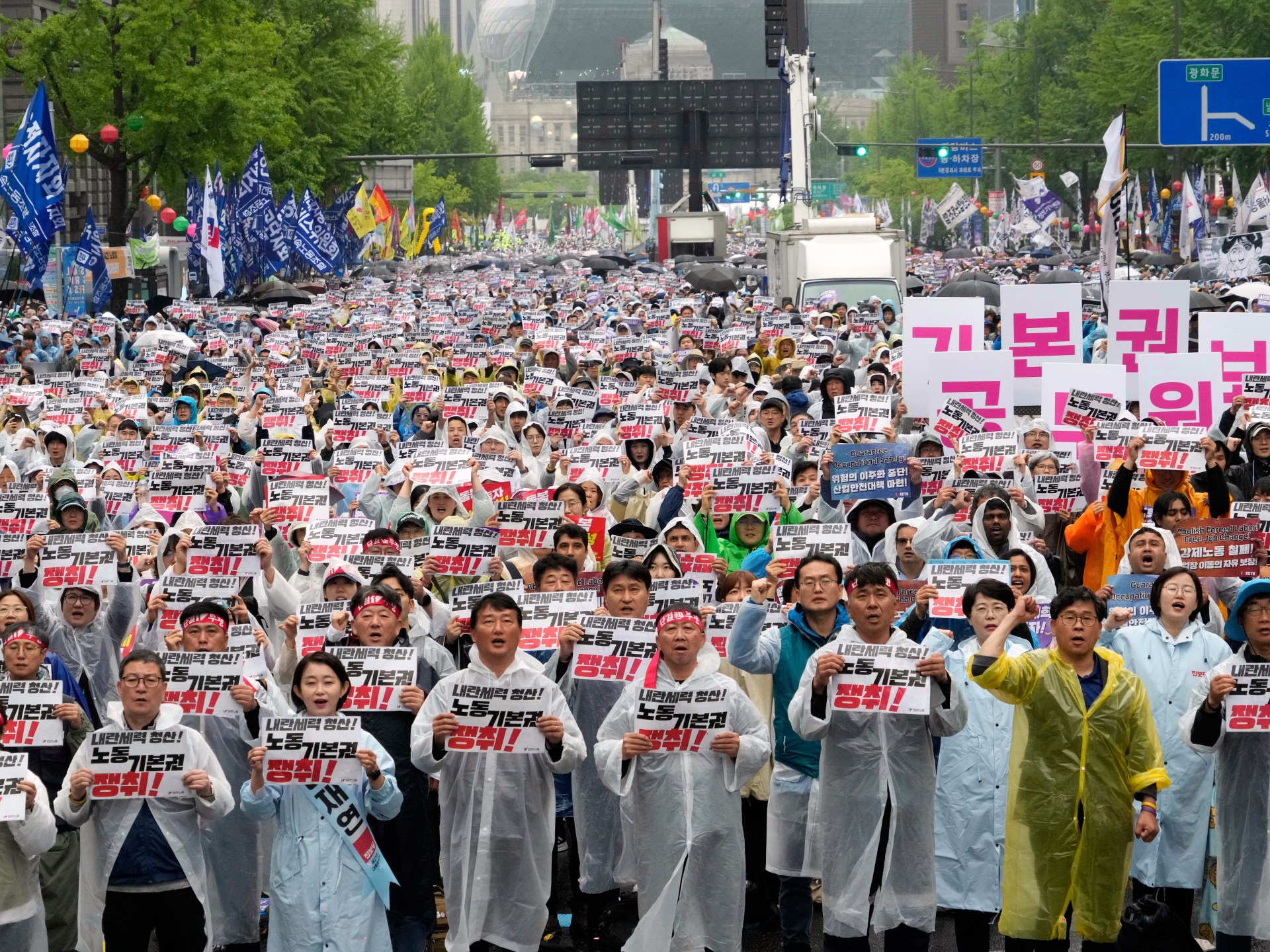
From Tokyo to Taipei to Manila, people across Asia marked May Day with marches and protests that spotlighted growing unease over United States President Donald Trump’s policies, amid fears of global economic instability.
The holiday, also known as International Workers’ Day or Labour Day, honours the struggles and achievements of workers and the labour movement. Rallies are expected across the US, as well, including in Chicago, Los Angeles, New York and Philadelphia.
Across multiple countries, Trump’s agenda was cited as a source of concern. In the US, organisers said their message this year will be focused on fighting Trump’s approach against immigrants, federal workers and diversity initiatives.
In Taiwan, President William Lai Ching-te referenced new US tariffs under Trump as he promoted a proposed spending bill aimed at stabilising the job market and supporting livelihoods. In the Philippines, protest leader Mong Palatino warned that “tariff wars and policies of Trump” threatened local industries.
In Japan, some said his policies hung over the day like a shadow, with one truck in the Tokyo march featuring a doll that resembled Trump. There, participant demands ranged from higher wages and gender equality to healthcare, disaster relief, a ceasefire in Gaza and an end to Russia’s invasion of Ukraine.
“For our children to be able to live with hope, the rights of workers must be recognised,” said Junko Kuramochi, a member of a mothers’ group in Tokyo.
Tadashi Ito, a union construction worker, said he worried about rising prices for imported raw materials.
“Everybody is fighting over work and so the contracts tend to go where the wages are cheapest,” he said. “We think peace comes first. And we hope Trump will eradicate conflict and inequalities.”
Los Angeles is expected to host one of the world’s largest May Day events this year, and a banner there summarised the day’s theme: “One Struggle, One Fight – Workers Unite!”
“We’re bringing the fight to the billionaires and politicians who are trying to divide us with fear and lies. We know the truth – an attack on immigrant workers is an attack on all workers,” April Verrett, president of the Service Employees International Union, which represents 2 million workers, said in a statement.
Middle East
What is behind the violence in Syria? | Syria’s War News
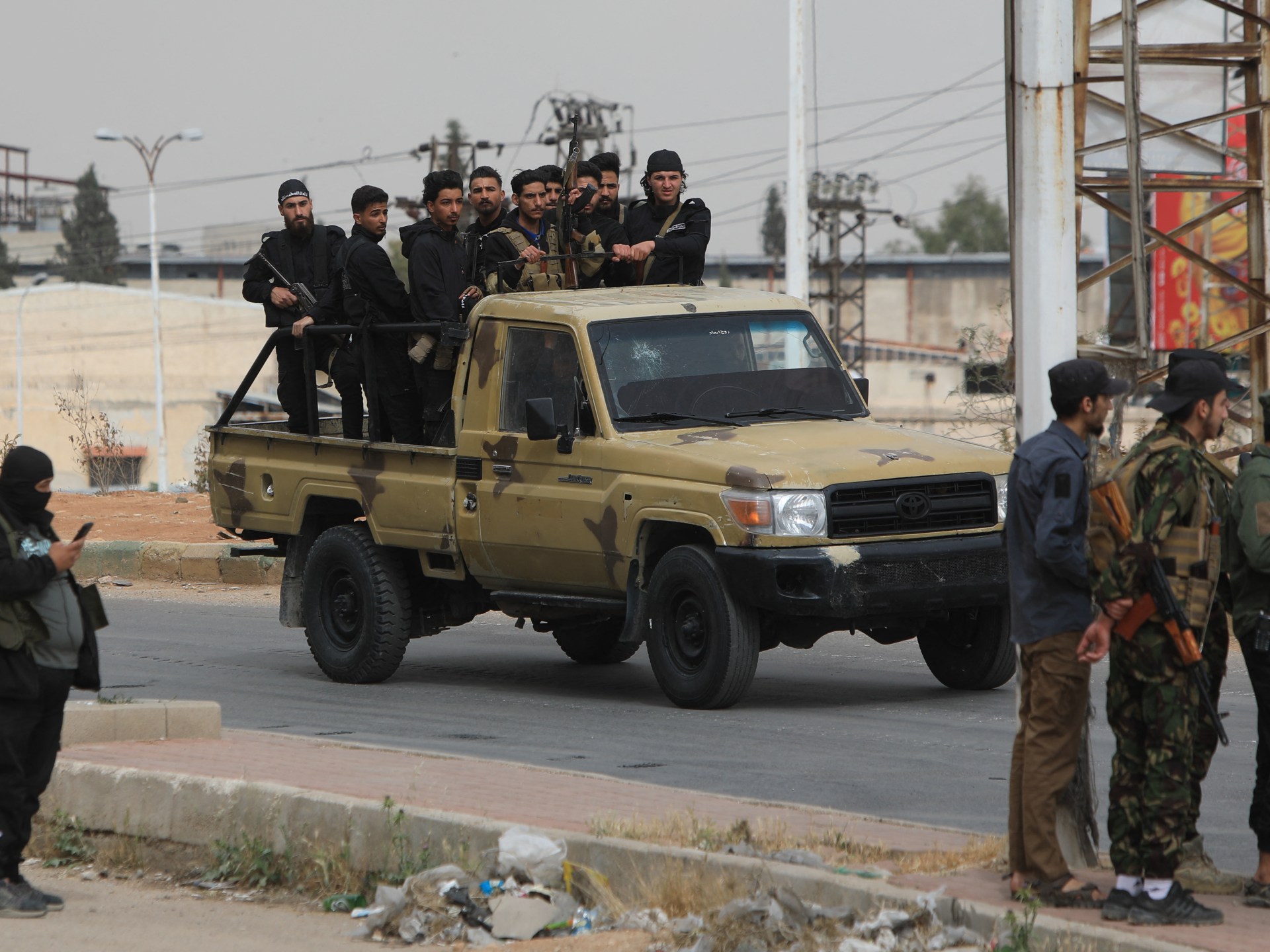
Clashes have erupted in Jaramana and Ashrafiyat Sahnaya on the outskirts of the Syrian capital, Damascus, this week.
The violence, which initially involved local armed men from the Druze religious minority and unknown gunmen from other towns, has killed at least 30 people.
Syrian security forces intervened to restore calm, but then Israel attacked Syria, claiming it was “defending the Druze”.
The unrest comes as the Syrian government, in power since the fall of former President Bashar al-Assad in December, tries to assert its control over the whole country.
So, what’s going on in Syria?
How did the latest unrest in Syria start?
Observers agree that the unrest seems to have started when a voice recording of a man cursing the Prophet Muhammad circulated, with claims that a Druze leader was speaking. The authenticity of the recording is questionable.
But it provoked the fury of many Syrians, and on Tuesday, a group of unknown gunmen attacked the mostly Druze town of Jaramana.
The Syrian Ministry of Interior says that its forces went to break up the clashes, before being attacked themselves.
The dead on Tuesday included at least two members of Syria’s General Security Services, the authorities said, while the Syrian Observatory for Human Rights (SOHR) said six Druze fighters and three “attackers” were also killed.
Then, on Wednesday, fighting spread to Ashrafiyat Sahnaya, another town in the Damascus suburbs with a significant Druze population.
A source in the Syrian Interior Ministry told Al Jazeera that 16 members of the security forces were killed in an attack on a security checkpoint in Sahnaya. That prompted more fighting, and six Druze fighters were killed, according to the SOHR.
Israel then launched air attacks on Sahnaya, targeting security personnel, according to the Interior Ministry, while Israel said it had attacked “extremists”.
The Syrian authorities have since announced that calm has been restored in both Jaramana and Ashrafiyat Sahnaya.
What led to the violence?
Syria’s new administration is trying to stabilise the country, but fallout from 12-plus years of war, the many armed groups in the country and the instability that comes with big changes have made for a volatile environment.
The worst unrest was in early March when hundreds were killed in Syria’s coastal region.
Fighters loyal to the Assad regime attacked security forces, setting off the violence as fighters from other areas came in to fight, and widespread attacks were reported against civilians, many from the former president’s Alawite sect.
There is fear in Syria that al-Assad’s supporters will keep trying to overthrow the new authorities, who have not yet been able to exert power and provide security across the whole country.
Some of that fear has morphed into suspicion of minorities such as Alawites and Druze.
The minorities, in turn, fear this suspicion and worry about the fact that there are still armed fighters with backgrounds in groups such as al-Qaeda.
The new government has emphasised that all are equal in the new Syria, but that has yet to quieten these fears.
Add to this mix the potential for fake news to spread on social media, and the country is rife with the tensions that led to the most recent fighting in Jaramana and Ashrafiyat Sahnaya.
Why is Israel involved?
Israel seems to have stepped up its attacks on Syria and is occupying more and more land since the fall of al-Assad.
It already illegally occupied part of the Syrian Golan Heights along the border, and regularly bombed sites in Syria it claimed belonged to pro-Iranian groups like Lebanon’s Hezbollah.
When al-Assad fled, Israel saw an opportunity, analysts say, and stepped up its attacks, claiming that the new government is “extremist” and cloaking itself as a defender of the Druze in Syria, part of whose community lives under Israeli control.
Israeli Prime Minister Benjamin Netanyahu has said “he would not allow” Syrian government forces to operate in Syrian territory south of the capital, Damascus, calling for the “full demilitarisation” of the area.
Some Israelis have called for taking control of Druze-majority areas in southern Syria, claiming that would create an alliance of minorities across the Middle East.
On Wednesday, after the fighting in Ashrafiyat Sahnaya, the Israeli military said that it had taken three Syrian Druze to Israel to receive medical treatment.
Who are the Druze, and who do they support?
The Druze, an ethnoreligious Arabic-speaking group that grew out of Ismaili Shia Islam, live in Jordan, Lebanon and Syria as well as Israel, especially the occupied Golan Heights.
Nobody can claim to know who “all the Druze” support. Individuals or sub-groups within each national community will have differing opinions.
The Druze population in Israel is estimated at 150,000, and Israel conscripts their young men into the army, whereas it does not conscript Palestinian citizens of Israel.
The Druze in Jordan, Lebanon and Syria are openly supportive of the Palestinian cause, while Syrian Druze leaders have vehemently rejected the idea of friendlier ties with Israel.
The communities are important players in their countries’ politics, particularly in Lebanon, where Druze leader Walid Jumblatt has been influential for decades.
In Syria, many Druze were active in the opposition against al-Assad, and have been publicly supportive of the new government.
-

 Lifestyle2 days ago
Lifestyle2 days agoAfter a year of turmoil, The Washington Post is taking note of its journalism again
-
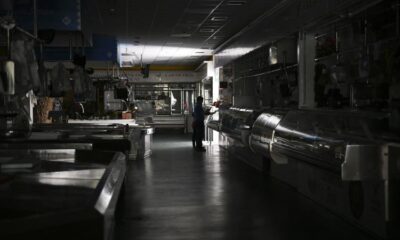
 Europe2 days ago
Europe2 days agoWhat caused the power outage in Spain and Portugal? Here’s what we know
-
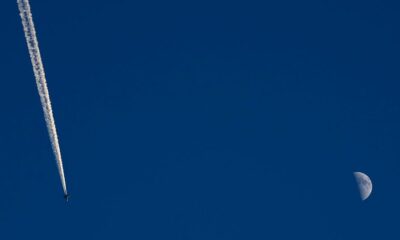
 Africa2 days ago
Africa2 days agoResearchers study using planes to cool the earth amidst global warming
-

 Africa2 days ago
Africa2 days agoBomb Blast Kills 26 in Northeast Nigeria
-

 Conflict Zones1 day ago
Conflict Zones1 day agoAbout 600 North Korean soldiers killed in war in Ukraine, lawmakers say | Russia-Ukraine war News
-

 Asia2 days ago
Asia2 days agoFall of Saigon: US officers who broke rank to save lives recall final days of Vietnam War 50 years on
-
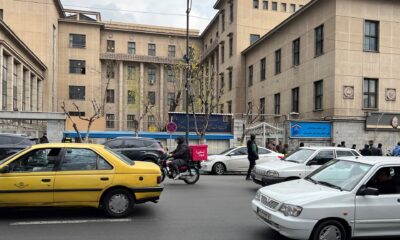
 Middle East1 day ago
Middle East1 day agoIran hangs man convicted of spying for Israel’s Mossad | Espionage News
-
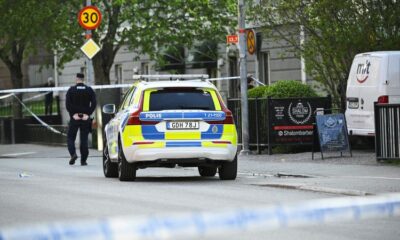
 Europe1 day ago
Europe1 day ago16-year-old suspect detained after 3 killed in shooting in Sweden




